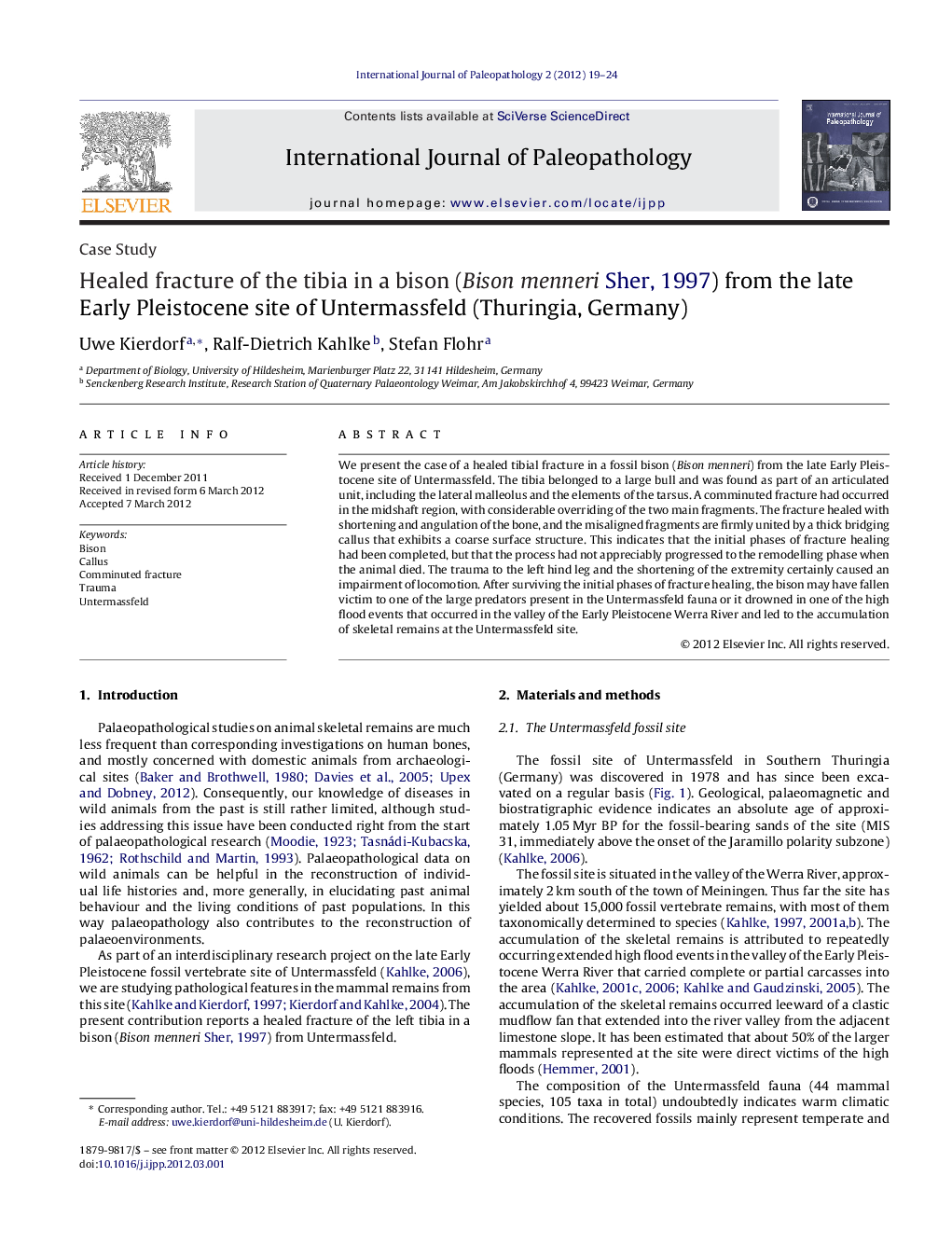| Article ID | Journal | Published Year | Pages | File Type |
|---|---|---|---|---|
| 101382 | International Journal of Paleopathology | 2012 | 6 Pages |
We present the case of a healed tibial fracture in a fossil bison (Bison menneri) from the late Early Pleistocene site of Untermassfeld. The tibia belonged to a large bull and was found as part of an articulated unit, including the lateral malleolus and the elements of the tarsus. A comminuted fracture had occurred in the midshaft region, with considerable overriding of the two main fragments. The fracture healed with shortening and angulation of the bone, and the misaligned fragments are firmly united by a thick bridging callus that exhibits a coarse surface structure. This indicates that the initial phases of fracture healing had been completed, but that the process had not appreciably progressed to the remodelling phase when the animal died. The trauma to the left hind leg and the shortening of the extremity certainly caused an impairment of locomotion. After surviving the initial phases of fracture healing, the bison may have fallen victim to one of the large predators present in the Untermassfeld fauna or it drowned in one of the high flood events that occurred in the valley of the Early Pleistocene Werra River and led to the accumulation of skeletal remains at the Untermassfeld site.
► A healed tibial fracture in an Early Pleistocene male bison (Bison menneri) is reported. ► Axial displacement of the fragments led to a marked shortening of the bone. ► The trauma to the hind leg and its shortening must have led to an impairment of locomotion in the bull. ► The process of fracture healing had not appreciably progressed into the remodelling phase when the animal died.
